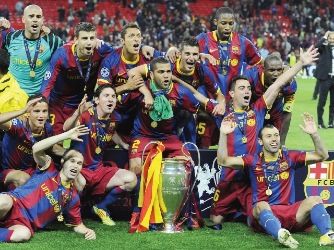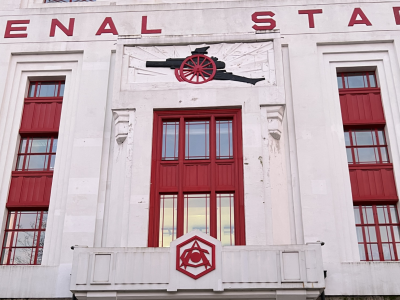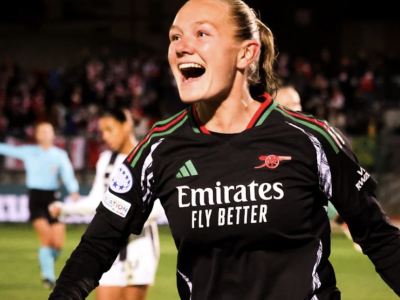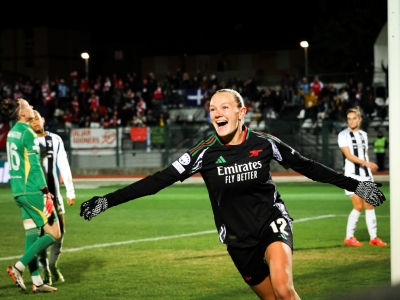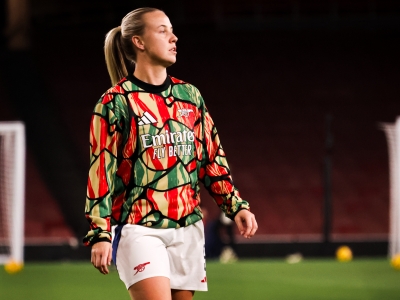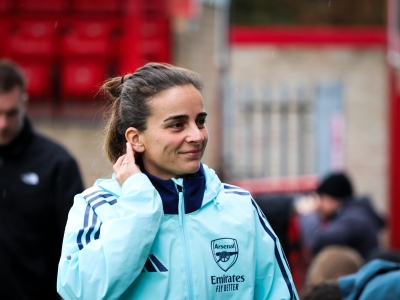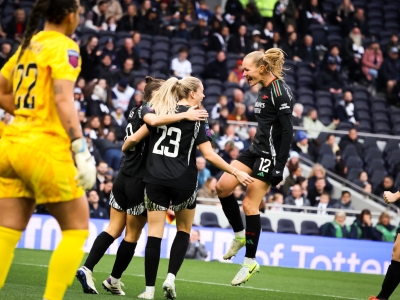There is little doubt that the current Barcelona team that lifted the Champions League for the second time in three seasons, making it the third in six for the club, will be ranked alongside the great sides in the history of the competition. This is not least because the tournament is much harder to win these days due to the increased number of top sides that take part – unlike the eras in which Real Madrid, Ajax, Bayern Munich, Liverpool and AC Milan were dominant. You can chew over Manchester United’s defensive errors all you like, but Lionel Messi is not only the best player on the planet at the moment, he may in time be regarded as the best there has ever been. I feel fortunate that I was able to watch one of his peak performances in the flesh, when Arsenal lost 4-1 at the Nou Camp in 2010. In tandem with the talents of Xavi and Iniesta, United could not live with their opponents on Saturday evening, although in fairness, no-one could. It made Inter’s two legged triumph over Guardiola’s team last season all the more remarkable, although Jose Mourinho’s side probably won the tie due to Barca having to travel to Milan by bus, a long old trek which is hardly ideal preparation for a high-intensity match. Iceland’s volcanic ash has a lot to answer for.
Bareclona’s football is what Arsene Wenger aspires to, although his vision is so pure he neglects to put any focus on the defensive side of the game. The Arsenal manager knows he is a long way short, as demonstrated by his tactics in the second leg of this season’s encounter. Yes, Nicklas Bendtner could have stolen the tie in its dying throes, but such an outcome would have been a fluke, and it is not something anyone should cling onto. In looking at how Barcelona have reached the stage they are at now, I was interested to see how they and Arsenal have progressed since their meeting in the Paris final in 2006. From Saturday’s starting eleven, only Victor Valdes was selected five years ago. Carlos Puyol was relegated to the subs bench at Wembley. From the 2006 subs, Xavi and Iniesta were not first choice picks. Lionel Messi was in the Barca squad back then, although injury meant he was an outsider for a chance in the final. I do have to say that had he been totally fit, he would have probably started instead of Ludovic Giuly and Arsenal’s evening may have been very different.
Of Arsenal’s eighteen that night, Fabregas and Eboue survive from the starting eleven, and from those on the bench Almunia, Clichy and Van Persie remain at the club. If one looks at Wenger’s current first choice eleven, one of the starters is there and two of the subs have stepped up. It’s a similar story to Barcelona’s, and yet the quality of the players that have come in tells its own story. Barca’s seven newbies are Dani Alves, Mascherano, Pique, Abidal, Busquets, Pedro and David Villa. Three of those came through the Academy (added to the four of the starters who were around in 2006), although Pique had to be bought back from, ironically, Manchester United to fulfill his potential. The outlay in transfer fees for the eleven players is approximately 105 million euros – say £95 million for the sake of argument. Looking at Arsenal’s first choice eleven, only Wilshere, Szczesny and Fabregas were at the club as sixteen year olds. I’ll exclude Theo Walcott as he was basically a transfer buy. Someone can do the maths on the combined fees for the other eight first choicers (for the sake of argument, Sagna, Vermaelen, Koscielny, Clichy, Song, Walcott, Nasri and Van Persie), but off the top of my head, I reckon it’s around £50 million. Remembering that Arsene Wenger has around £40 million in his player trading account, there is an argument to suggest that he may not be as far behind Barcelona in terms of resources as is sometimes believed.
What does seem clear though, in the way that the respective teams have developed since 2006 is that – even though they have similar models in terms of coaching – the Catalan side are getting a lot more value out of their academy. Even from a very young age, Arsenal’s trainees have technique drilled into them. It’s all about control of the football and both sides can be categorized as tip-tap teams that move the ball around quickly in the centre of the park awaiting an opening to exploit. However, what really seems significant is that Arsenal do not utilize their academy product to do anything but make money through selling the players to other teams. That generally they then fail to go on and make the most of their opportunities elsewhere indicates that they were not good enough in the first instance or that they would have been better served remaining at Arsenal and being integrated into a team that plays with more of the style they have supposedly been trained to play.
Whichever it is, there seems little doubt that Arsenal are failing to produce sufficient first team players from their youth system. Arsene Wenger talks about the idea of players developing a love for the culture of the club, and yet he is quick enough to dispense with the most likely candidates to actually buy into this – local English players who have grown up at Arsenal. Jack Wilshere is a current and obvious exception, but imagine if there were more players with his spirit and attitude in the first team. It is a spirit Barcelona have, which players who arrive from other clubs are integrated into. I don’t really see an equivalent at Arsenal. It’s interesting to note that – in terms of honours – Barcelona had a relatively barren spell not so long ago when the team was dominated by Dutch imports. It was significant that the domination was broken up by Frank Rijkaard. In a similar way, Arsenal are now dominated by French or French-speaking players. This was okay when they arrived in north London and were integrated by those who had been at the club longer than Arsene Wenger, but times have moved on now and the bedrock – in terms of identity – has shifted.
There is little doubt that Wenger distrusts English youth, which may go a long way to explaining why Liam Brady’s department has served the club so poorly in terms of first team players in the last fifteen years. No-one is criticizing the club for failing to discover a Lionel Messi – he’s a one-off. But spirit and team ethic can take you a long way and I feel that has been lost in recent years. That many fans struggle to identify strongly with a good number of the players is indicative of this. We struggle to get a sense of who these players really are and I sometimes doubt it would be easy to hold a natural conversation with many of them. The barriers – mainly cultural – are too great. I doubt such a distance exists between Jack Wilshere, Theo Walcott and the fans they meet. I am not sure exactly what I am trying to get at with this particular piece, but if I were to try I would say that the identity of Arsenal has been lost somewhere along the line. In a weird kind of way, I think if I were to define the moment it happened, it was when the club moved to a new stadium, as that was the trigger for the switch in personnel from the team that played in Paris – albeit with just two Englishmen – and that which has as yet failed to deliver a trophy. It’s strange that, in spite of the 2006 team featuring nine foreign players, for whatever reason, I felt I knew those players better. Maybe they just had bigger personalities.
Anyway, I thoroughly enjoyed the 90 minutes of football I witnessed in the final, which is not always the case with this particular fixture. Note particularly how the tip-tap football was utilised to create shooting opportunities, rather than an end in itself. The performance of the winners made Arsenal’s achievement of beating Barca in the first leg of their last 16 tie all the more remarkable. There’s an account of that evening here written by a 15 year old Gooner which encapsulates what a great match it was for those of an age that haven’t been lucky enough to witness quite as many great Arsenal occasions as some of us.
The end of season Gooner Survey is now online. I have a memory that you need to fill in the whole thing in one go, so maybe do not start submitting your entry unless you have half an hour to complete the thing. Just click here when you are ready to begin. It’s online for a while yet and we’ll give you a warning when closing date nears. One entrant will be selected at random to receive next season’s home replica shirt for their trouble.
The current issue of The Gooner can be bought online here.

